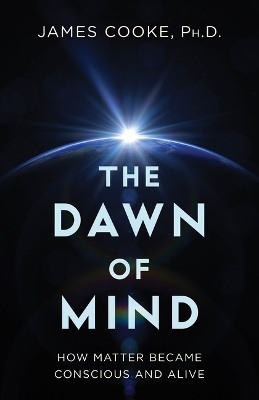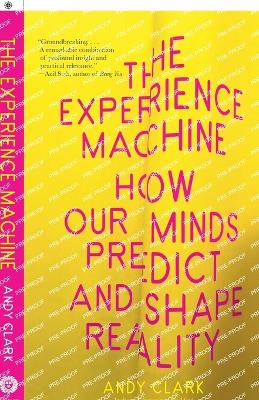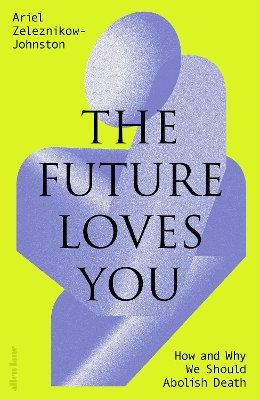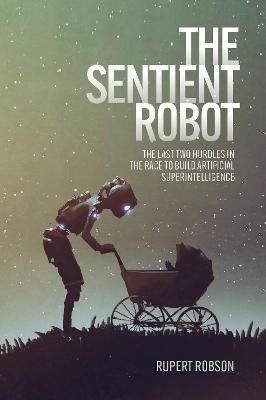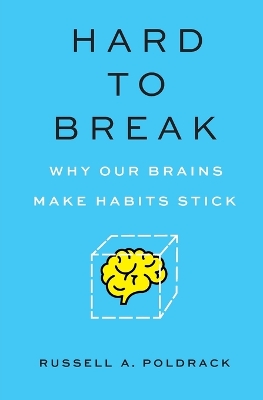Conscious Mind, Resonant Brain
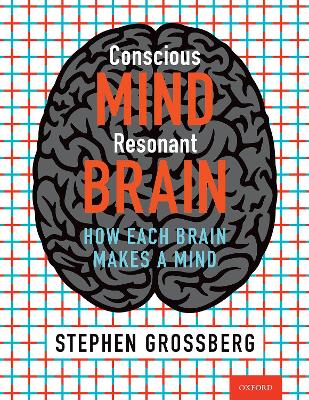 -10%
portes grátis
-10%
portes grátis
Conscious Mind, Resonant Brain
How Each Brain Makes a Mind
Grossberg, Stephen
Oxford University Press Inc
10/2021
768
Dura
Inglês
9780190070557
15 a 20 dias
1868
Descrição não disponível.
PREFACE
Biological intelligence in sickness, health, and technology
Chapter 1. OVERVIEW
From Complementary Computing and Adaptive Resonance to conscious awareness
Chapter 2. HOW A BRAIN MAKES A MIND
Physics and psychology split as brain theories were born
Chapter 3. HOW A BRAIN SEES: CONSTRUCTING REALITY
Visual reality as illusions that explain how we see art
Chapter 4. HOW A BRAIN SEES: NEURAL MECHANISMS
From boundary completion and surface filling-in to figure-ground perception
Chapter 5. LEARNING TO ATTEND, RECOGNIZE, AND PREDICT THE WORLD
From vigilant conscious awareness to autism, amnesia, and Alzheimer's disease
Chapter 6. CONSCIOUS SEEING AND INVARIANT RECOGNITION
Complementary cortical streams coordinate attention for seeing and recognition
Chapter 7. HOW WE SEE A CHANGING WORLD
How vision regulates object and scene persistence
Chapter 8. HOW WE SEE AND RECOGNIZE OBJECT MOTION
Visual form and motion perception obey complementary laws
Chapter 9. TARGET TRACKING, NAVIGATION, AND DECISION-MAKING
Visual tracking and navigation obey complementary laws
Chapter 10. LAMINAR COMPUTING BY CEREBRAL CORTEX
Towards a unified theory of biological and artificial intelligence
Chapter 11. HOW WE SEE THE WORLD IN DEPTH
From 3D vision to how 2D pictures induce 3D percepts
Chapter 12. FROM SEEING AND REACHING TO HEARING AND SPEAKING
Circular reaction, streaming, working memory, chunking, and number
Chapter 13. FROM KNOWING TO FEELING
How emotion regulates motivation, attention, decision, and action
Chapter 14. HOW PREFRONTAL CORTEX WORKS
Cognitive working memory, planning, and emotion conjointly achieve valued goals
Chapter 15. ADAPTIVELY TIMED LEARNING
How timed motivation regulates conscious learning and memory consolidation
Chapter 16. LEARNING MAPS TO NAVIGATE SPACE
From grid, place, and time cells to autonomous mobile agents
Chapter 17. A UNIVERSAL DEVELOPMENTAL CODE
Mental measurements embody universal laws of cell biology and physics
Biological intelligence in sickness, health, and technology
Chapter 1. OVERVIEW
From Complementary Computing and Adaptive Resonance to conscious awareness
Chapter 2. HOW A BRAIN MAKES A MIND
Physics and psychology split as brain theories were born
Chapter 3. HOW A BRAIN SEES: CONSTRUCTING REALITY
Visual reality as illusions that explain how we see art
Chapter 4. HOW A BRAIN SEES: NEURAL MECHANISMS
From boundary completion and surface filling-in to figure-ground perception
Chapter 5. LEARNING TO ATTEND, RECOGNIZE, AND PREDICT THE WORLD
From vigilant conscious awareness to autism, amnesia, and Alzheimer's disease
Chapter 6. CONSCIOUS SEEING AND INVARIANT RECOGNITION
Complementary cortical streams coordinate attention for seeing and recognition
Chapter 7. HOW WE SEE A CHANGING WORLD
How vision regulates object and scene persistence
Chapter 8. HOW WE SEE AND RECOGNIZE OBJECT MOTION
Visual form and motion perception obey complementary laws
Chapter 9. TARGET TRACKING, NAVIGATION, AND DECISION-MAKING
Visual tracking and navigation obey complementary laws
Chapter 10. LAMINAR COMPUTING BY CEREBRAL CORTEX
Towards a unified theory of biological and artificial intelligence
Chapter 11. HOW WE SEE THE WORLD IN DEPTH
From 3D vision to how 2D pictures induce 3D percepts
Chapter 12. FROM SEEING AND REACHING TO HEARING AND SPEAKING
Circular reaction, streaming, working memory, chunking, and number
Chapter 13. FROM KNOWING TO FEELING
How emotion regulates motivation, attention, decision, and action
Chapter 14. HOW PREFRONTAL CORTEX WORKS
Cognitive working memory, planning, and emotion conjointly achieve valued goals
Chapter 15. ADAPTIVELY TIMED LEARNING
How timed motivation regulates conscious learning and memory consolidation
Chapter 16. LEARNING MAPS TO NAVIGATE SPACE
From grid, place, and time cells to autonomous mobile agents
Chapter 17. A UNIVERSAL DEVELOPMENTAL CODE
Mental measurements embody universal laws of cell biology and physics
Este título pertence ao(s) assunto(s) indicados(s). Para ver outros títulos clique no assunto desejado.
PREFACE
Biological intelligence in sickness, health, and technology
Chapter 1. OVERVIEW
From Complementary Computing and Adaptive Resonance to conscious awareness
Chapter 2. HOW A BRAIN MAKES A MIND
Physics and psychology split as brain theories were born
Chapter 3. HOW A BRAIN SEES: CONSTRUCTING REALITY
Visual reality as illusions that explain how we see art
Chapter 4. HOW A BRAIN SEES: NEURAL MECHANISMS
From boundary completion and surface filling-in to figure-ground perception
Chapter 5. LEARNING TO ATTEND, RECOGNIZE, AND PREDICT THE WORLD
From vigilant conscious awareness to autism, amnesia, and Alzheimer's disease
Chapter 6. CONSCIOUS SEEING AND INVARIANT RECOGNITION
Complementary cortical streams coordinate attention for seeing and recognition
Chapter 7. HOW WE SEE A CHANGING WORLD
How vision regulates object and scene persistence
Chapter 8. HOW WE SEE AND RECOGNIZE OBJECT MOTION
Visual form and motion perception obey complementary laws
Chapter 9. TARGET TRACKING, NAVIGATION, AND DECISION-MAKING
Visual tracking and navigation obey complementary laws
Chapter 10. LAMINAR COMPUTING BY CEREBRAL CORTEX
Towards a unified theory of biological and artificial intelligence
Chapter 11. HOW WE SEE THE WORLD IN DEPTH
From 3D vision to how 2D pictures induce 3D percepts
Chapter 12. FROM SEEING AND REACHING TO HEARING AND SPEAKING
Circular reaction, streaming, working memory, chunking, and number
Chapter 13. FROM KNOWING TO FEELING
How emotion regulates motivation, attention, decision, and action
Chapter 14. HOW PREFRONTAL CORTEX WORKS
Cognitive working memory, planning, and emotion conjointly achieve valued goals
Chapter 15. ADAPTIVELY TIMED LEARNING
How timed motivation regulates conscious learning and memory consolidation
Chapter 16. LEARNING MAPS TO NAVIGATE SPACE
From grid, place, and time cells to autonomous mobile agents
Chapter 17. A UNIVERSAL DEVELOPMENTAL CODE
Mental measurements embody universal laws of cell biology and physics
Biological intelligence in sickness, health, and technology
Chapter 1. OVERVIEW
From Complementary Computing and Adaptive Resonance to conscious awareness
Chapter 2. HOW A BRAIN MAKES A MIND
Physics and psychology split as brain theories were born
Chapter 3. HOW A BRAIN SEES: CONSTRUCTING REALITY
Visual reality as illusions that explain how we see art
Chapter 4. HOW A BRAIN SEES: NEURAL MECHANISMS
From boundary completion and surface filling-in to figure-ground perception
Chapter 5. LEARNING TO ATTEND, RECOGNIZE, AND PREDICT THE WORLD
From vigilant conscious awareness to autism, amnesia, and Alzheimer's disease
Chapter 6. CONSCIOUS SEEING AND INVARIANT RECOGNITION
Complementary cortical streams coordinate attention for seeing and recognition
Chapter 7. HOW WE SEE A CHANGING WORLD
How vision regulates object and scene persistence
Chapter 8. HOW WE SEE AND RECOGNIZE OBJECT MOTION
Visual form and motion perception obey complementary laws
Chapter 9. TARGET TRACKING, NAVIGATION, AND DECISION-MAKING
Visual tracking and navigation obey complementary laws
Chapter 10. LAMINAR COMPUTING BY CEREBRAL CORTEX
Towards a unified theory of biological and artificial intelligence
Chapter 11. HOW WE SEE THE WORLD IN DEPTH
From 3D vision to how 2D pictures induce 3D percepts
Chapter 12. FROM SEEING AND REACHING TO HEARING AND SPEAKING
Circular reaction, streaming, working memory, chunking, and number
Chapter 13. FROM KNOWING TO FEELING
How emotion regulates motivation, attention, decision, and action
Chapter 14. HOW PREFRONTAL CORTEX WORKS
Cognitive working memory, planning, and emotion conjointly achieve valued goals
Chapter 15. ADAPTIVELY TIMED LEARNING
How timed motivation regulates conscious learning and memory consolidation
Chapter 16. LEARNING MAPS TO NAVIGATE SPACE
From grid, place, and time cells to autonomous mobile agents
Chapter 17. A UNIVERSAL DEVELOPMENTAL CODE
Mental measurements embody universal laws of cell biology and physics
Este título pertence ao(s) assunto(s) indicados(s). Para ver outros títulos clique no assunto desejado.

